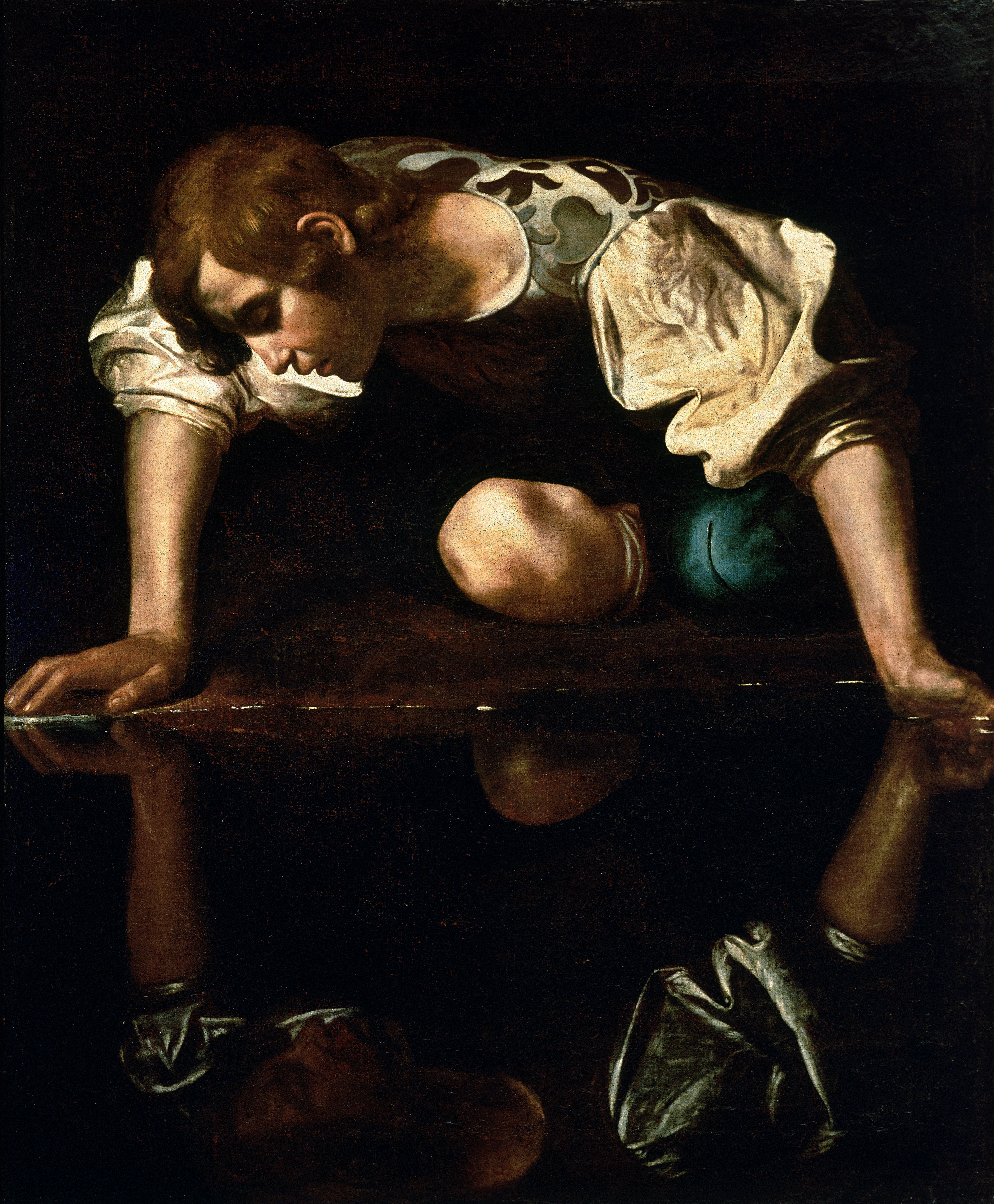The Renaissance: Baroque Art

This is Narcissus by Caravaggio, painted 1597–1599
This painting is of the Greek figure of Narcissus, from whom we get the name for narcissistic personality disorder. The son of a river nymph, a prophet decreed that Narcissus would live to old age if he did not recognize himself. Narcissus was very beautiful and spurned the affections of all the young women who chased after him. One day he stopped to drink from the water, saw his reflection, and fell deeply in love with it. He neither ate nor drank until he wasted away gazing at his reflection. Upon his death, he was transformed into a daffodil.
The deep dark colors of this painting make everything in the background until we can only see Narcissus, and to a lesser extent, his reflection. This is similar to what Narcissus himself sees, so we as the viewer also become unable to look at anything but him. His reflection is as dark and shadowed as his impending fate of death by self-neglect. The water itself is like a void just waiting for him to fall into. Narcissus is a representation of vanity and self-centered behavior to the point of harm. This is like how royalty have often been setting the beauty standards for centuries and yet have caused much harm with their whims.
I don't think I would own a copy of this work because the dark tone of it is not my style and would bring the feeling of a room down.
Hello, I personally am a fan of the darker themes that were used in this period. It made things dramatic for me, I wouldn't want a painting like this in a common room of mine, but for a private room is a different story. My relationship to the theme isn't huge but I may have some narcissistic traits, which may be looking at myself for too long like the person portrayed in the art.
ReplyDeleteHello, I love your analysis of the painting as well as your connection between the mythology, the lesson, and the current-day usage of the term (Narcissism). You made a very good point about how the painter made the main focus the man, symbolizing Narcissus's solitary interest. The dark space around him, and even his obscured reflection (which might symbolize his inability to accept how he is seen from a distance or by other people), create a powerful stillness that surrounds his being, emphasizing a singular point in time where, for Narcissus, everything is perfect. This is a very deep painting. What is the medium of this painting?
ReplyDeleteHi Moey, great analysis!
ReplyDeleteGreek mythology is a neat subject, as it can be interpreted so many different ways. Narcissus is one of the more "cut and dry" stories, so I think this painting is spot on. Using the Rembrandt style really does the subject matter justice, as it puts all the focus on Narcissus and his vanity. In other tellings of his story, he actually looks at his reflection due to his grief for his twin sister, who died during their childhood. He can only see her again by looking at himself and wastes away in his grief.